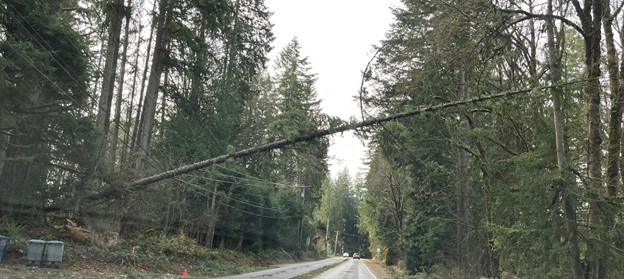No lights, internet and electricity for five days—that was the reality for many residents in Sammamish after a bomb cyclone struck the Puget Sound region in November 2024. The situation felt like a step back in time, while just a few miles away in Seattle, power was restored in less than a day, thanks to underground power lines.
The powerful storm knocked out electricity for thousands across Washington. By 7 p.m. that day, most of Sammamish was in the dark. By 10 a.m. the next morning, Puget Sound Energy reported nearly 502,000 people without power. For many Sammamish residents, it took up to five days to restore electricity.
To avoid any similar instances, Sammamish must consider burying its power lines.
Switching to underground power lines offers several benefits, primarily reliability. Unlike above-ground lines, which are vulnerable to extreme weather, underground lines are protected from storms, falling trees, and other hazards.
This protection reduces the frequency and duration of power outages. Underground lines can better withstand severe weather events like the bomb cyclone that caused widespread outages in Sammamish.
Safety is another significant advantage. When above-ground lines fall, they pose risks of fires or electrocutions, especially in storm-stricken areas. Underground lines eliminate these dangers, as they are shielded from the elements and not exposed to falling trees or wires.
For Sammamish residents, this would mean fewer safety hazards during and after storms, particularly in a region experiencing increasingly extreme weather.
Beyond practical concerns, underground power lines enhance the area’s aesthetic appeal. Above-ground utility poles and wires often clutter the landscape, detracting from Sammamish’s natural beauty. Removing these poles could help preserve the town’s picturesque views.
However, the transition to underground power lines is not without challenges. The upfront costs of burying power lines are substantial, and the installation process can be disruptive.
Environmental impacts, such as disruptions to local ecosystems during installation, must also be considered. Nevertheless, these concerns can be addressed through careful planning and mitigation.
Ultimately, the benefits of underground power lines—improved reliability, safety, and aesthetics—position them as a smart choice for Sammamish. As the region faces more frequent and intense storms, transitioning to underground infrastructure would ensure a safer and more reliable power system.









